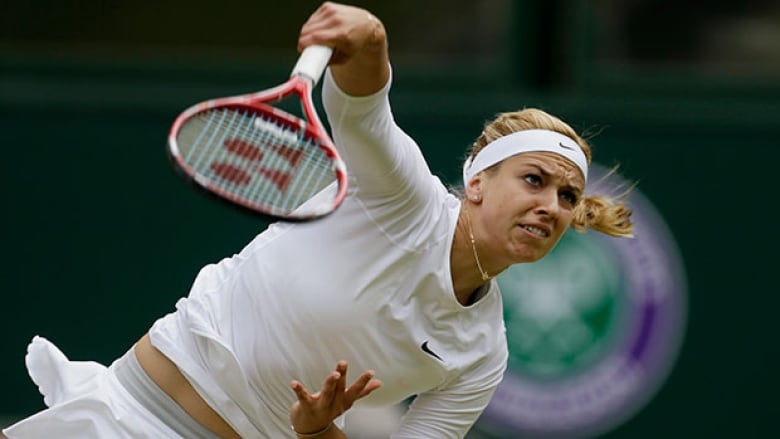Professional tennis has witnessed some amazing displays of strength and dexterity, particularly in serving. As a vital component of the game, the serve not only starts play but also has the power to decide the result of a point. The race to deliver the fastest serve has captured the attention of both players and spectators over the years. This article explores the tennis history’s of fastest servers.
A player’s rapid serve can be a very effective tool in their toolbox, giving them an advantage by forcing the opposition to work early or gaining easy games. It is impossible to overstate the mental and practical benefits of having one of the fastest serves in the game.
Fastest servers have had an advantage in tennis history. Bill Tilden’s unheard-of powerhouse serve helped him win ten major titles back in the 1920s, and Stan Smith’s incredible serve helped propel him to the top of the rankings and two Grand Slam victories in the 1970s. However, the introduction of bigger racquets manufactured of graphite rather than wood in the 1980s signalled a true turning point. In the 1990s, players like Pete Sampras and Goran Ivanisevic made their names doing this, and as technology advances, serves become increasingly quick.
These times demonstrate the players’ technical proficiency and physical prowess, as well as the fierce rivalry and significant stakes of the Australian Open semifinals. We’re living through a time where the serve is more important than ever, setting the tone for exciting matches and lifelong memories, thanks to advancements in tennis technology and training.
Types Of Tennis Serve
It’s crucial to understand the four serve varieties that tennis players might use in order to set up a serve that will trouble their opponent before moving on.
Flat serve:
Because it is strong and firm, the flat serve is frequently the fastest of all serves and is perfect for use as the opening shot in a tennis match. You should use it to increase the average speed at which you serve tennis.
Slice serve:
Although it is slower than a flat serve, the slice serve can cause the ball to bounce farther away while producing sidespin and drawing the other player wide, opening up the rest of the court.
Kick serve:
Kick serves have a lot of topspin and are more controlled than smash serves, although having less power. In order to target a player’s weakness, the server frequently employs this tactic.
Underhand serve:
The least popular of the four serves, this one is primarily taught to younger players or those who have had personal injuries. The serve and follow-through travel point makes contact below the shoulder.
Factors Affecting Serve Speed
- Height: Because of their larger angle of impact, taller players typically produce faster serves.
- Equipment: Serve times have improved as a result of racket technological advancements.
- Radar Measurement: To ensure measurement consistency, the governing organisations of tennis have established certain requirements for radar equipment.
- Historical Reports: Service speeds reported prior to the use of radar guns may not be as accurate.
Top Fastest Servers In Tennis History
1. John Isner
The tall American player John Isner, who is renowned for both his legendary match in tennis history and his devastating serves, tops the list. Isner’s serve reached a record-breaking 157.2 mph at its peak in the Davis Cup match against Australia in 2016. But it was his lengthy match at the 2010 Wimbledon Championships that really made him famous. His three-day contest versus Nicolas Mahut clocked an incredible 11 hours and five minutes, making it the longest tennis match ever.
2. Ivo Karlovic
Ivo Karlovic is a Croatian tennis player who is among the tallest in tennis history at a towering 6 feet 11 inches. Karlovic hit a career-high 156 mph serve in the first round of the 2011 Davis Cup, surpassing Andy Roddick’s record. Karlovic is unique not only for his serves but also for his stamina; he is getting close to reaching the incredible figure of 13,000 career aces, which he now holds the record for.
3. Andy Roddick
Andy Roddick is still among the wealthiest tennis players in the world, despite his retirement. A significant portion of Roddick’s projected $30 million net worth comes from his lightning-fast serve. For a long while, Roddick held the record for the fastest serve ever, reaching the 155-meter mark at the 2004 Davis Cup. With a forehand that is equally as destructive as his big serve, the former world number one player is the most decorated player on this list. Roddick’s career earnings rank him 20th all-time. Beyond this 2004 effort of 155 mph, Roddick maintains serve records at multiple additional tournaments. At Queen’s, the Australian Open, and numerous other prestigious competitions, no one has ever served faster than Roddick.
4. Milos Raonic
Milos Raonic has been a dark horse in the Grand Slam of tennis for almost ten years. One of the greatest players from Canada ever, he peaked at number three in the global rankings in 2016. Raonic, who is currently just outside the top 10, is still there or thereabouts even in his forties. It’s difficult to return Raonic’s serve, as Novak Djokovic has observed. It is “bigger than big,” according to Pete Sampras. The Canadian truly embodies the moniker “Missile.” Raonic was starting to establish himself as a rising contender when he hit a serve of 155 mph during the 2012 SAP Open.
5. Ryan Harrison
Great Britain’s Ryan Harrison, who is the youngest player on this list, came in fifth place with a serve speed of 152 mph at the 2013 Western & Southern Open. Harrison’s tennis career started with a phenomenal rise, breaking into the junior rankings’ top 10 and being the youngest player in history to win an ATP match at the age of 16.
6. Feliciano Lopez
With a serve speed of 152.0 mph, Feliciano Lopez, an experienced player from Spain who retired in 2023 after an outstanding 26-year career, takes sixth place. In 2015, Lopez—who is renowned for both his strong serves and his adaptability in the doubles division—reached a career-high ranking of nine in doubles and twelve in singles. His sustained success in the sport is evidence of his talent and commitment.
7. Marius Copil
Marius Copil, a player from Romania, holds the seventh position on the list with a serve speed of 151.6 mph, which he recorded during the 2016 European Cup quarterfinals. At the moment, Copil holds the 383rd position in the world rankings for ATP singles. His career high singles ranking was 56. Known for upsetting elite players when he was at the top of his game, Copil’s strong serves have made a lasting impression on the tennis community.
8. Hubert Hurkacz
Hubert Hurkacz, the 10th-ranked player in the world right now, of Poland, came in eighth place with the fastest serve in history in the 2016 Davis Cup, clocking in at 151 mph. Hurkacz has made significant progress in the tennis globe. In 2018, he placed in the top 100, demonstrating his ability to play both serve and receive.
9. Taylor Dent
Taylor Dent, an American, breaks into the top 10 with a serve speed of 149.8 mph. In the 2010 French Open, Dent broke the record with this serve, demonstrating his accurate and potent serving. Dent’s contributions to tennis history are indelible, even if he faced obstacles due to injury.
10. Juan Martin Del Potro
Juan Martin Del Potro, an Argentine who served at 149.1 mph, completes the list. After upsetting Roger Federer in the US Open finals in 2009, Del Potro became well-known for his all-around abilities on the court as well as his potent serves. His legendary career gained a new dimension with his triumph at the 2017 Stockholm Open, where he beat top-seeded Grigor Dimitrov in the championship match.
What Is The Fastest Tennis Serve?
Sam Groth, an Australian tennis player, set a record in 2012 in Busan, South Korea, with the fastest serve ever measured, reaching a speed of 263.4 km/h, or 163.7 mph. The serve was recorded at an ITF Challenger level event, but because of inconsistent calibration of the serve speed tracking apparatus, the ATP (Association of Tennis Professionals) does not formally accept it as the fastest serve. John Isner, an American, now owns the official ATP record for the fastest tennis server, which he achieved at the 2016 Davis Cup at a speed of 253 km/h, or 157.2 mph.
What Is The Fastest Women Tennis Serve?
In the second qualifying round of the 2018 Hungarian Ladies Open, Spanish player Georgina Garcia Perez hit a serve at a speed of 220 km/h, or 136.7 mph, setting a record for the fastest female tennis server. But since it wasn’t timed at a main draw level of a WTA event, the WTA (Women’s Tennis Association) does not recognise this as the fastest serve. With a serve hit during the 2014 Stanford Classic that travelled 210.8 km/h (131 mph), Sabine Lisicki of Germany holds the record for the fastest female tennis server acknowledged by the WTA.
Conclusion
Tennis players are always pushing the boundaries of human endurance in the thrilling quest to hit the quickest serve, with technology recording every significant victory. We’ll probably see even faster tennis servers in the future as technology and training approaches advance, further pushing the limits of this professional sport. This list of the fastest servers in tennis demonstrates the players’ raw strength and talent as well as the dynamic character of the game. Whatever name it goes by, the fastest servers in tennis will always be a hot topic for both players and spectators.
More:
Most Watched Sports Around The World













